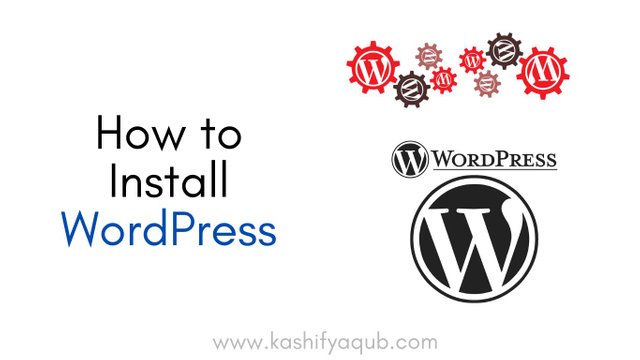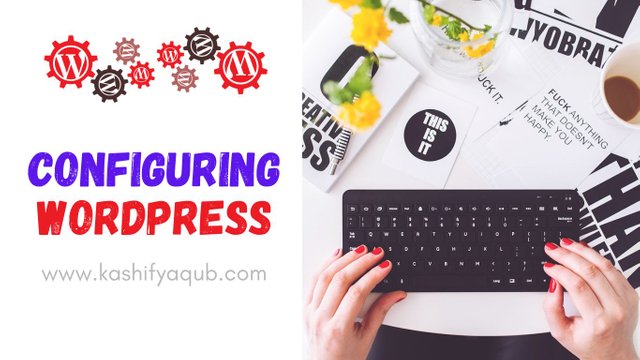WordPress is an open-source content management system (CMS) that enables you to create a website or blog easily. It is used by millions of websites worldwide and provides an intuitive, user-friendly interface that allows you to customize and manage your website’s content.

In this article, we’ll take a look at how to install WordPress, WordPress configuration, and how to set up it.
If you want to create a website on WordPress, you will need hosting and a domain. I highly recommend these hosting providers to you. Hostinger.com and Dreamhost.com. By buying hosting from them you will get a domain name for free.
How to Install WordPress?
One of the best things about WordPress is how easy it is to install. Depending on the hosting service that you choose, you will likely have a step-by-step wizard to help you with the installation process.
The WordPress installation procedure can vary between web hosts, but there are some standard steps that will help you get your website set up in no time.
Choose a web host - Select a web hosting provider that offers an easy setup with support for all of WordPress’s features and tools, such as MySQL databases and PHP versions.
Register a domain name - Buy a domain name that is perfect for your business or brand. The domain will be associated with your site, so choose carefully! You can purchase domains through services like Namecheap.com. This is the best domain name provider in the world.
Download WordPress - Visit the downloads page on WordPress.org and download the most recent version of WordPress (it includes essential security updates).
Upload the files - Using an FTP application (such as FileZilla or Cyberduck), upload all of your downloaded files to your hosting account’s directory for public files and folders (this varies among hosts, but it’s typically something like “public_html”).
Create a MySQL database - Create a new database in order to store all of the information related to your website, such as posts, pages, comments, and settings (web host control panels usually have user-friendly tools – MySQL databases – for this purpose).
Install WordPress- Last but not least, navigate to your site address/wp-admin regardless of whether you're using www in front of the domain or not – it should take you to an installation screen where you can begin setting up WordPress on your website.
Setting up WordPress
Setting up WordPress is relatively straightforward and you don’t need to be an experienced web developer to do it. You can download the WordPress software, get a web hosting account, and install it on a web server in just 5 minutes. Here is an overview of what needs to be done:
Choose a hosting provider: Your WordPress website will require web hosting in order to store your website files and make them available online, so the first step is searching for and choosing a reliable hosting provider who will ensure that your website runs smoothly. WordPress recommendation is Dreamhost.com.
Sign up for an account: Once you’ve chosen your hosting provider, you will need to create an account with them by going through their registration process.
Install WordPress: Most hosts offer easy installation options for WordPress. With just a few clicks of a button, you can have it set up on your host's server with no trouble at all! If you are looking for more flexibility or customization, some hosts also offer scripts that allow advanced users more control over their setup process.
Log into your dashboard: Once WordPress has been successfully installed on your server, you can log into the administrative dashboard using the credentials supplied by your host to start adding content such as pages and posts, as well as configure any other settings or themes related to the look of your site.
Customize Your Site: Now that everything has been set up correctly, it's time to customize! You may choose from hundreds of WordPress themes - or opt to design or code custom page templates - that best fit the particular style or brand identity of your site. You can also add plugins or widgets that extend functionality such as user commenting systems and contact forms functionality for increased engagement with visitors and customers alike!
Configuring WordPress

Configuring WordPress is an important step in getting a blog or website ready for publishing. From adjusting the home page to selecting how many posts and/or pages to display, configuring WordPress helps to define how your content is displayed.
First, log into your website dashboard and navigate to Settings > General. Here you will see options for setting a site title, tagline, timezone, and language. It’s important to set these accurately in order for the content of your site to be displayed correctly by search engines, like Google and Bing.
Next, you can choose between Static Front Page or Your Latest Posts for your website’s homepage. A static homepage allows visitors to view one particular page as their entry point into your website; a dynamic front page displays a stream of articles from the most recent posts you’ve published.
Under Reading, settings are additional choices that will help shape the way visitors view and interact with content on your site. You can choose how many posts should be displayed per page; this number applies only to blog post archives and category pages, while static pages are not affected by this setting. The other two settings are defined as “Syndication feeds”– these allow visitors to subscribe via RSS feeds so they can get alerts when new content is published on your site via email or web-based readers they already use.
Finally, under Discussion Settings, there are even more granular settings available such as:
- whether or not you want comments open to all viewers or followers only
- how frequently comment moderation should take place (if enabled).
When everything is configured properly here, be sure to click Save Changes!
In conclusion, WordPress is an excellent choice for anyone looking to create a website or a blog with minimal fuss and effort.